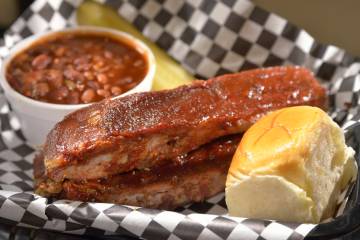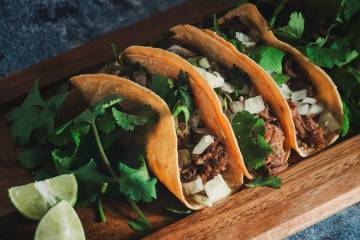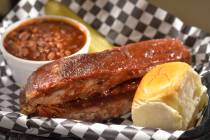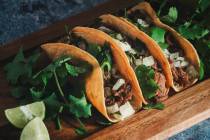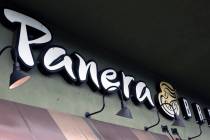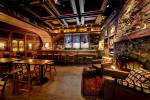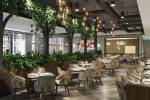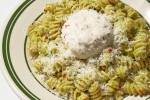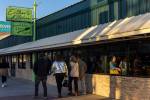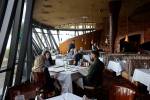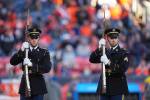Ferraro’s owner strives to make patrons feel at home
Vegas Voices is a weekly question-and-answer series featuring notable Las Vegans.
Gino Ferraro and his wife, Rosalba, both came to the United States from Italy at age 12, when their families moved to Syracuse, New York. They met during junior high school in an English class for Italian immigrants and married in 1974.
Two years later, Ferraro sold his Syracuse coffee shop to his brother and the couple moved to Las Vegas, where they would own and operate several restaurants, including, since 2009, Ferraro’s Italian Restaurant and Wine Bar on Paradise Road.
We recently talked to Ferraro about how the restaurant industry has changed in Las Vegas since he first arrived here and the important role that family plays in running his business.
Review-Journal: Why did you decide to move to Las Vegas in the ’70s?
Ferraro: I saw the decline in Syracuse. It was an industrial city when I lived there; there were a lot of opportunities. I had a coffee shop at the age of 18 — like a Starbucks-style coffee shop. I came here at 21 on vacation for a week and saw relatives. It was beautiful. We moved here for a better life.
RJ: Your bio says that when you moved here in 1976, the city “wasn’t ready for the cafe concept,” and so you went to work in casinos. What do you mean by that?
Ferraro: Because it was a small town. You didn’t have the population to sustain the concept that came out years later with Starbucks. You go to Europe, there’s a coffee shop like that on every corner. Here, it was 250,000 in population. It was spread out where you didn’t have the density of population. The banker told me, “Are you out of you mind? That’s not going to work here.”
RJ: You opened an Italian provisions company in 1983. With all of the Italians in town then, was there really a shortage of Italian foods?
Ferraro: There were only a few pizza shops and restaurants that I would actually sell to. I was responsible for bringing a lot of brands into Las Vegas that weren’t available here, (including) Barilla. Parmigiana — nobody knew what it was. It was before the time when quality and brand names were developed in Las Vegas.
RJ: How has the restaurant industry in Las Vegas changed since then?
Ferraro: First of all, you know the number of restaurants that opened up lately; we have 4,000 restaurants in the whole Las Vegas area. That’s a lot of restaurants. But most of these restaurants have changed from fine dining to fast-casual, quick-serve and small bites. You see hotels going from gourmet restaurants to small plates. I believe the demographics in Las Vegas have changed since the ’70s and ’80s, where people came and dressed up, went to the show. The demographics have changed, I believe not for the better. Restaurants open up right on the sidewalk.
RJ: Have you seen restaurant customers change since then?
Ferraro: They’ve changed in a sense — first of all, dress code. If I put a dress code on my restaurant and demanded people wear a jacket, I’d be out of business in six months. The demographics have changed where people don’t dine as much as they used to. There’s a lot of bars where people go for a hamburger.
RJ: We’re assuming the Paradise location has a clientele that’s a mix of tourists and locals. How does that differ from a clientele that’s primarily local?
Ferraro: We are lucky that 75, 80 percent of our business is tourist, convention business. For the locals, we’re a destination restaurant for special occasions. The town is spread out so much, from Summerlin it’s 20 miles to get to me for dinner. You have a glass of wine — people are more conscious of drinking and driving. Here, we sell more wine, more drinks because people take a cab. The average neighborhood, people drive for a couple of blocks — a mile at most — go in for a quick bite. It’s not dining in the sense that people go in for two or three hours. The tourists, before they come to me, they have to spend $50 (in round-trip cab fare). We have to offer value and a complete experience. I’m here every night, I recognize people, I buy them a drink, I buy them dessert, I make them feel at home. You don’t find that on the Strip very much. You have to give them the whole package to make people return. You have to give them a quality experience. We have tourists that come back a dozen times a year. They don’t go anywhere else; they dine here every night. I can mention many, many names. I know them by name.
RJ: Family obviously means a lot to you; your son, Mimmo, has been the chef, and Rosalba plays an active role. Can you elaborate on that a little?
Ferraro: (Mimmo) spends time here, comes and oversees things; we’ve opened three pizzerias (Pizza Forte at Sunset Station in Henderson, the Hard Rock Hotel and T-Mobile Arena). We have a chef from Sicily; he’s been with us more than a year now. Overall, this restaurant is me. (Rosalba) bakes, does the accounting, greets people. There’s a trust when you have family members in the restaurant. The customers know when they come here, they see a face they recognize, they see a member of the family. It’s important to people. The owners are here; they know things are going to be OK.
Contact Heidi Knapp Rinella at hrinella@reviewjournal.com. Find more of her stories at www.reviewjournal.com and follow @HKRinella on Twitter.




